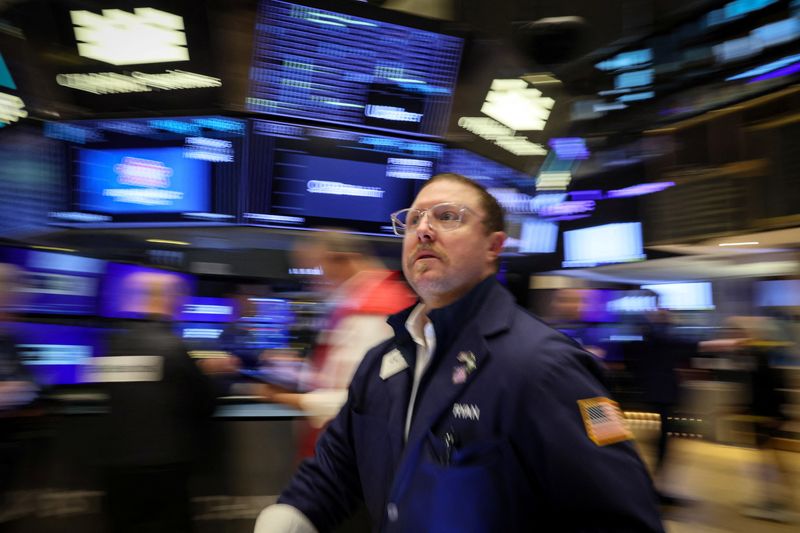By Sarupya Ganguly
BENGALURU (Reuters) - A key indicator of an oncoming recession implied by the U.S. bond market is no longer reliable, according to nearly two-thirds of strategists polled by Reuters.
A persistent negative spread between 2-year and 10-year U.S. Treasury yields is a key input into many analysts' models as a reliable predictor of recession, having occurred in the lead-up to nearly all recessions since 1955. It offered a false signal just once during that time.
The yield curve has been inverted for more than 20 months now - currently by 46 basis points - but most of the recent discussion in markets has been about the probability of no recession or even the risk of a re-acceleration in economic growth.
Nearly two-thirds of strategists in a March 6-12 Reuters poll of bond market experts, 22 of 34, said the yield curve's predictive power is not what it once was.
"I feel the inverted yield curve is just not as good an indicator as before," said Zhiwei Ren, portfolio manager at Penn Mutual Asset Management.
"If you have these two things going on together - insatiable demand for the long-end from real money like pension funds and the Fed keeping front-end rates higher because of the resilience of the economy - the curve will stay inverted for a while."
Since the 2007-2008 global financial crisis, the Federal Reserve has on multiple occasions conducted aggressive buying of Treasury securities as part of is stimulus program, meaning it owns a much larger proportion of the market in its own portfolio than it did before.
Many observers have argued over recent years this ownership is distorting market pricing, although strategists interviewed to discuss the latest poll results did not mention suppressed yields via "quantitative easing" as a reason.
"The difficulty this time is that the policy rate is more than double the fed (funds rate's) longer-run equilibrium, and it's the magnitude and speed of rate hikes that have contributed to the inversion," said Steve Major, global head of fixed income research at HSBC (LON:HSBA).
In the meantime, financial markets have aggressively scaled back bets this year on when the Fed will first cut interest rates, from March to May and now to June.
This has led several strategists to ramp up 12-month forecasts for the rate-sensitive 2-year Treasury note yield by a median 21 basis higher than one month ago to 3.68%.
The benchmark 10-year Treasury note yield, currently at 4.10%, too was seen falling only a modest 19 basis points to 3.91% by the end of August, and to 3.75% in a year, according to 60 strategists polled.
"Disinverting" the curve requires these short-term yields to fall much more sharply than longer-term ones, or for longer-term yields to rise.
In addition to a decision on when to cut, the Fed will soon have to judge when to slow and then finally stop unloading some of the securities it purchased through its massive "quantitative tightening" program.

Asked when the Fed would start slowing, or tapering, the pace of shrinkage of its balance sheet, 14 of 26 respondents said in June. Other responses ranged from March to December.
Seventeen of 26 said the Fed would conclude its tapering program either in the first quarter of 2025 or later.